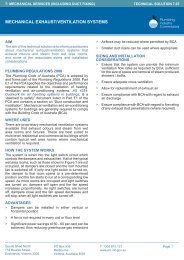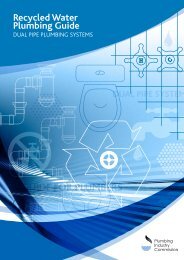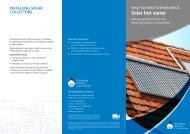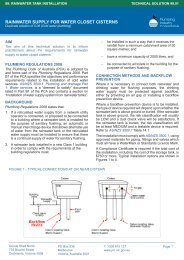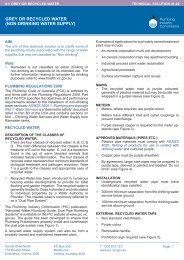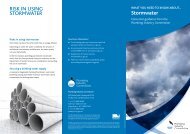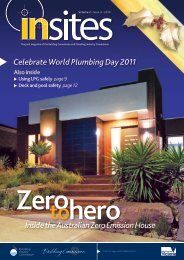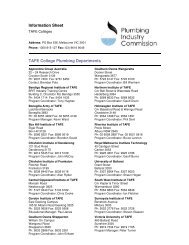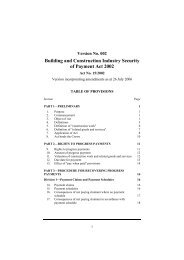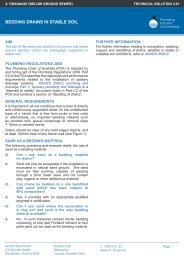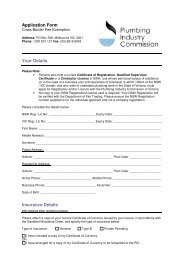Annual Report 2007-08 - Plumbing Industry Commission
Annual Report 2007-08 - Plumbing Industry Commission
Annual Report 2007-08 - Plumbing Industry Commission
Create successful ePaper yourself
Turn your PDF publications into a flip-book with our unique Google optimized e-Paper software.
NOTES TO THE FINANCIAL STATEMENTS<br />
For the year ended 30 June 20<strong>08</strong><br />
1.9 Cash assets and cash equivalents<br />
Cash assets comprise cash on hand, cash in banks, and term deposits which are readily convertible to cash.<br />
1.10 Investments<br />
Investments, generally comprised as amounts on deposit, are brought to account at cost. Interest revenue is recognised when the interest<br />
is earned.<br />
1.11 Receivables<br />
Trade debtors are carried at amounts receivable. The collectability of debts is assessed on an ongoing basis and specific provision is made<br />
for any doubtful accounts, where there is objective evidence that the debts will not be collected. Bad debts are written off when identified.<br />
1.12 Financial assets<br />
The <strong>Commission</strong> classifies its investments as held to maturity. The classification depends on the purpose for which the investments were<br />
acquired. Management determines the classification of its investments at initial recognition. The <strong>Commission</strong> assesses at each balance<br />
date whether the financial assets or group of financial assets are impaired.<br />
Held to maturity investments<br />
Where the <strong>Commission</strong> has the positive intent and ability to hold investments to maturity, they are stated at amortised cost less<br />
impairment losses.<br />
The effective interest method is a method of calculating the amortised cost of a financial asset and of allocating interest income over the<br />
relevant period. The effective interest rate is the rate that exactly discounts estimated future cash receipts through the expected life of the<br />
financial asset, or, where appropriate, a shorter period.<br />
1.13 Inventories<br />
Stocks on hand represent publications for re-sale and are stated at the lower of cost or net realisable value.<br />
1.14 Property, plant and equipment<br />
(a) Revaluations of non-current assets<br />
Subsequent to initial recognition as assets, non-current physical assets, other than plant and equipment are measured at fair value. Plant<br />
and equipment are measured at cost. Revaluations are made with sufficient regularity to ensure that the carrying amount of each asset<br />
does not differ materially from its fair value at the reporting date.<br />
Valuations of freehold land and buildings are based on independent valuations carried out by P I Cramer, FAPI, AREI based on current<br />
market valuations. All freehold land and buildings were revalued as at 30 June 2006.<br />
Revaluations by independent assessments are conducted at least every three years.<br />
Revaluation increments are credited to the asset revaluation reserve, except that, to the extent that an increment reverses a revaluation<br />
decrement in respect of that class of asset previously recognised as an expense in net results, the increment is recognised immediately as<br />
revenue in the net result.<br />
Revaluation decrements are recognised as an expense unless there is an existing revaluation reserve in respect of that class of assets that<br />
have been revalued. In those circumstances, the decrements are offset against the revaluation reserve.<br />
(b) Acquisition of assets<br />
The cost method of accounting is used for all acquisitions of assets. Cost is measured as the fair value of the assets given up or liabilities<br />
undertaken at the date of acquisition plus incidental costs directly attributed to the acquisition.<br />
It is the policy of the <strong>Commission</strong> to write off as current expenditure all items of a unit value less than $200.<br />
62



